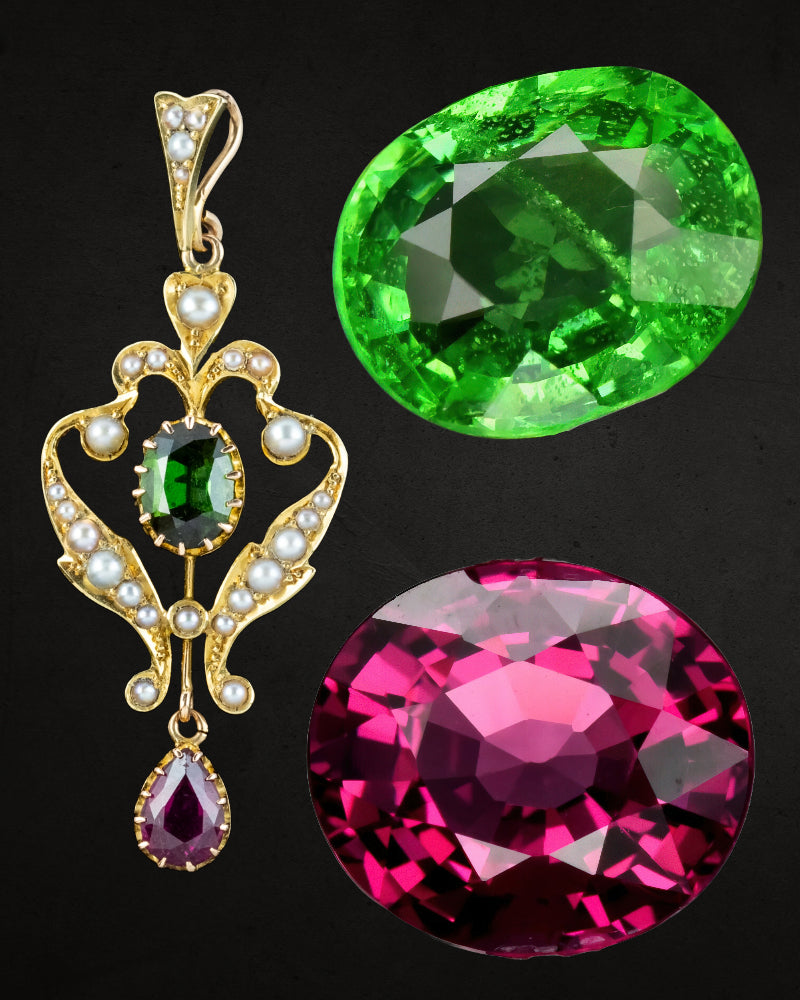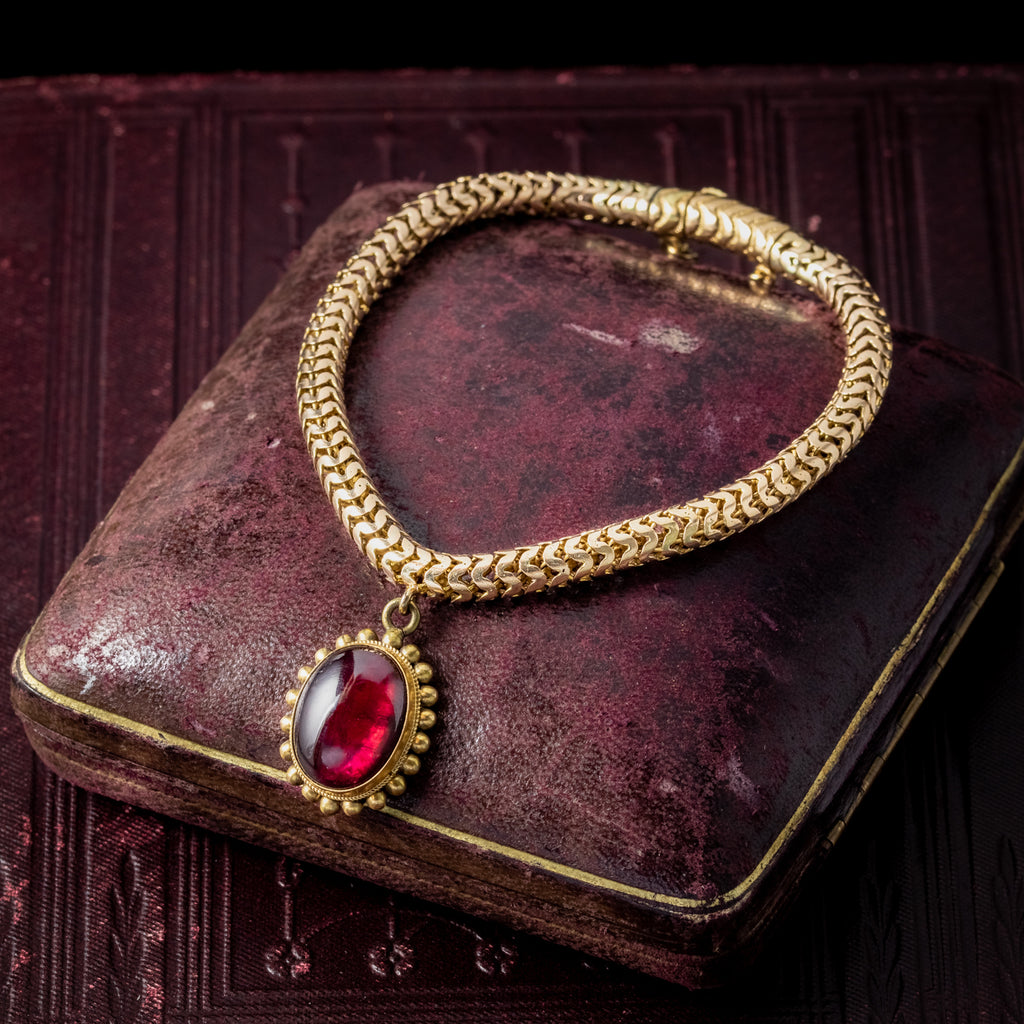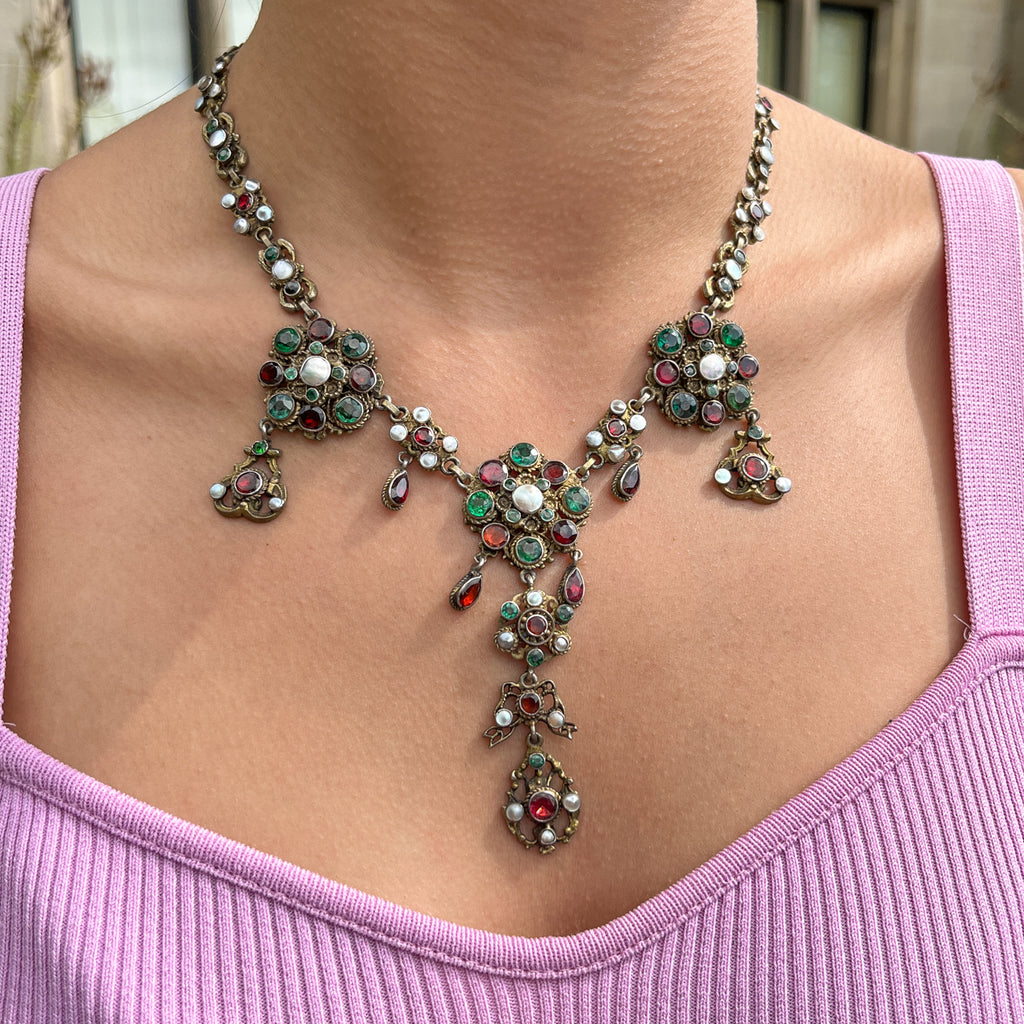Get to know Garnet a Refined and Worldly Wonder
Garnet has been used in jewellery since ancient times, and is widely known today as a deep red gemstone which was particularly popular during the Victorian era. It is considerably more abundant than other red stones and has been worked into countless forms over the centuries, yet despite its presence in many beautiful works of art it is poorly understood by those outside of gemmological institutions.

At Laurelle Antique Jewellery we have discovered many magnificent pieces of garnet jewellery over the years, and we wanted to share some information about this surprisingly complex and varied gemstone.
Varieties
Although the great majority of gem-quality garnet used in jewellery is a deep red this is only one of myriad colours that the mineral can exhibit. Red shades are the most common, with some being so dark as to be almost black and others bright enough to be mistaken for rubies by the casual observer. Green varieties are also commonly used in jewellery, and blue garnet is amongst the rarest form. Blue garnet was only discovered in the 1990s, so most antique garnet jewellery contains red or green garnet. There are even types of garnet which exhibit different colours under different light sources in a similar way to alexandrite or tanzanite.

Gem quality specimens are clear or translucent with minimal inclusions and are usually cut with facets which allow them to glitter when in motion, making them ideal for jewellery. Garnets are also often cut en cabochon, with a domed top and flat base, creating a smooth, almost organic look.

Many Shades and Many Names
Garnet is one of the most varied gemstones in both colour and formation. It is only through modern gemmological science that we have discovered quite how varied it can be. The wide range of types of garnet mean that it has held many names over the years.
The word “garnet” comes from the Middle English (14th century) word “gernet”, meaning “dark red”, which was borrowed from Old French “grenat”, which in turn was taken from the Latin “granum”, meaning seed. It has been speculated that this association with red seeds refers to the pomegranate, whose seeds closely match the colour of the most numerous garnets, and whose name shares the same root.

The stones which are most often used in jewellery are known as precious garnet as they were historically the most prized for this purpose. They are also known as almandine garnets, which comes from the Alabanda region of Asia where they were originally mined.
These type of garnet are also known as carbuncles, although this term was originally applied to any red stone. This term comes from the Latin “live coal”, a wonderfully descriptive term for a stone which seems to burn with a dark inner flame.

Distinct from, but closely related, are Pyrope garnets, from the Greek pyrōpós, meaning “fire-like”. These stones occur more commonly in America and come in many varieties which are named for their places of origin, often erroneously labelled as rubies, such as with Cape ruby, California ruby and Rocky Mountain ruby. There are even Bohemian rubies, which originate in the Czech republic, although it should be noted that rubies are very different gemstones which just happen to share similar colouring.

Spessartine garnets are a more varied colour, ranging from orange to violet red, and when Pyrope and Spessartine elements are fused together they create the rarest garnet which shift between colours depending on what light shines on them. They may be blue-green and purple, but because of their mercurial nature they often display many hues between.

In extremely rare cases garnet can contain traces of other minerals which cause them to exhibit a star pattern in much the same way as the prized star rubies and star sapphires.
The most variety of single colour garnets are the andradite garnets, which include the black variety known as melanite and the highly prized bright green demantoid garnets. There are also grossular garnets, named after the gooseberry, and many regional variations including the tsavorite, named after Tsavo in Kenya.

Finally there are knorringite garnets, which do not occur naturally but whose traces can indicate that there are diamonds in the nearby vicinity, and synthetic garnets which are known as “rare-earth garnets”.
Garnets in Culture
Garnets can be found in many locations around the world, and they have become culturally significant in many ways to many different people over the centuries that they have been mined.

The stone is the birthstone for the month of January, and is associated with the astrological signs Aquarius and Capricorn. It is also the official stone of New York State, and different varieties have been adopted as the state gemstone of Connecticut (almandine), Vermont (grossular) and Idaho (star).
In ancient Persia (modern day Iran) garnets were believed to be embodiments of the forces of the natural world.
Antique Garnet Jewellery
Garnet was widely used in jewellery through the Georgian and Edwardian periods, but it found particular prominence in the Grand Period of the Victorian era. After the death of Queen Victoria’s consort Prince Albert the nation entered a period of mourning which was reflected in the styles and materials used in jewellery.
Darker stones came into favour, and the garnets deep red was perfect for a nation embracing more sombre themes and designs.

At Laurelle Antique Jewellery we have an extensive collection of vintage and antique garnet jewellery, including pieces from the Victorian era.
If you have any questions about the pieces which we sell feel free to get in touch on England: 0333 700 4500 or send us an email via enquiries@antiquejewellerygroup.com. Our team is always happy to help!



